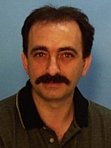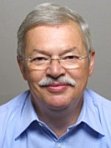A1: Nanoscale multiferroic heterostructures
We investigate the relations between preparation conditions, microstructure, and properties of nanoscale multiferroic heterostructures made from ferroelectric and ferromagnetic oxides. In the present second term of the project, we focus on magnetoelectric transport effects within tunneling structures and structures containing a two-dimensional electron gas (2DEG). In such structures, apart from magnetoelectric interaction via an elastic mechanism, also electronic mechanims may occur as already shown by theoretical work. In case of magnetoelectric transport effects, the transport of charge carriers along or through a heterostructure will be influenced by a magnetic and/or electric field, or by a corresponding ferromagnetic and/or ferroelectric switching process. The important magnetoelectric interactions take place on the nanometer scale, e.g. at the interfaces of the heterostructure, but the magnitude of the magnetoelectric effect is not adversely affected by the nanoscale.
Regarding multiferroic and magnetoelectric tunneling structures, the influence of the switching state of both the ferroelectric tunneling barrier and the ferromagnetic electrodes onto the tunneling current will be investigated. Depending on the thickness of the ferroelectric barrier, also other mechanisms of transport than quantum mechanical tunneling will be studied, e.g., thermionic injection and Fowler-Nordheim tunneling. Finding optimum growth conditions for high-quality, epitaxial ferroelectric oxide barriers of few nanometer thickness, as required for quantum mechanical tunneling, as well as for high-quality ferromagnetic or ferrimagnetic electrodes, will be part of the project. Examples for structures to be studied include epitaxial heterostructures of type magnetic metal (oxide)/ferroelectric barrier/metal oxide/substrate, as Fe3O4/Pb(Zr,Ti)O3/SrRuO3/SrTiO3, Permalloy/Pb(Zr,Ti)O3/(La,Sr)MnO3/ SrTiO3 and (Metal)/CoFe2O4/Pb(Zr,Ti)O3 /(La,Sr)MnO3/SrTiO3. We also strive for lateral resolution on the nanometer scale, e.g., by integrating transport measurements into a scanning force microscope.
Regarding magnetoelectric transport effects within structures containing a two-dimensional electron gas (2DEG), epitaxial perovskite/semiconductor heterostructures will be grown. To this end, classical dielectric or ferroelectric materials like SrTiO3, BaTiO3 or BiFeO3, will have to be suitably doped or implanted, in order to provide them with semiconducting properties. Subsequently, metal oxide/semiconductor heterostructures will be grown, replacing the classical semiconductor by the doped or implanted perovskite, and a field effect will be investigated, e.g. on heterostructures of type Metal/BiFeO3/doped BaTiO3/SrTiO3 substrate. The transport processes occuring in the 2DEG will be investigated with respect to the equilibrium charge carriers, but also with respect to non-equilibrium charge carriers. The latter will be excited by short laser pulses, so that the time-dependent carrier density will be characterized with time resolution on the nanosecond scale.
The entire project shall contribute to a better understanding of magnetoelectric transport effects and to an exploration of ways to use them in applications.
Principal Investigators
|
Prof. Dr. Marin Alexe ⇒
phone: +49 (0) 345/55 82705 fax: +49 (0) 345/55 11223 |

|
|
Prof. Dr. Dietrich Hesse ⇒
phone: +49 (0) 345/55 82741 fax: +49 (0) 345/55 11223 |

|


